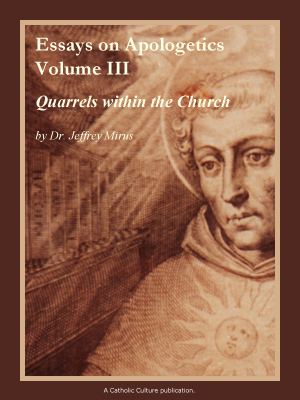Explanatory Note on Praying for Priests
by Congregation for the Clergy
Explanatory note to help promote the practice of continuous Eucharistic adoration [1] in dioceses (parishes, rectories, chapels, monasteries, convents, seminaries) for the benefit of priests and priestly vocations
In his Apostolic Exhortation Sacramentum Caritatis, the Holy Father, Pope Benedict XVI concretized the perennial teaching of the Church on the centrality of Eucharistic adoration in ecclesial life by a direct appeal addressed to all pastors, bishops, priests, as well as the People of God, for perpetual Eucharistic adoration: “With the Synod Assembly, therefore, I heartily recommend to the Church's pastors and to the People of God the practice of Eucharistic adoration, both individually and in community. (194) Great benefit would ensue from a suitable catechesis explaining the importance of this act of worship, which enables the faithful to experience the liturgical celebration more fully and more fruitfully. Wherever possible, it would be appropriate, especially in densely populated areas, to set aside specific churches or oratories for perpetual adoration. I also recommend that, in their catechetical training, and especially in their preparation for First Holy Communion, children be taught the meaning and the beauty of spending time with Jesus, and helped to cultivate a sense of awe before his presence in the Eucharist. (Sacramentum Caritatis, n. 67)
In order to support the Holy Father’s appeal, the Congregation for the Clergy, in its own solicitousness for the presbyterate, proposes that:
- Each diocese appoint a priest who will devote himself full time – as far as possible – to the specific ministry of promoting Eucharistic adoration and coordinating this important service in the diocese. Dedicating himself generously to this ministry, this priest will be able to live this particular dimension of liturgical, theological, spiritual and pastoral life, possibly in a place specifically set aside for this purpose by the bishop himself, where the faithful will benefit from perpetual Eucharistic adoration. Just as there are Marian Shrines, with rectors in charge of that particular ministry and suitable for its specific needs, it is also possible to have “Eucharistic shrines” – with priests in charge of them – which radiate and foster the special love that the Church has for the Holy Eucharist, worthily celebrated and continuously adored. Such ministry within the presbyterate will remind all diocesan priests, as Benedict XVI said, that “the secret of their sanctification lies precisely in the Eucharist. (…) The priest must be first and foremost an adorer who contemplates the Eucharist” (Angelus, 18 September 2005);
- Specific places are to be reserved for continuous Eucharistic adoration. To that end, parish priests, rectors, and chaplains are encouraged to introduce the practice of Eucharistic adoration in their communities, both personally and communally, in a collective effort to enhance prayer life. Let everyone be involved, beginning with children preparing for First Holy Communion;
- The dioceses that are interested in this project might look for appropriate donations in order to organize continuous Eucharistic adoration in the seminary, in parishes, rectories, oratories, shrines, monasteries, and convents. Divine Providence will surely assist in finding benefactors who are willing to contribute toward suitable works to set in motion this project of Eucharistic renewal for the particular Churches, specifically: the construction or adaptation of a place of worship for adoration within a large worship building; the purchase of a solemn monstrance or a noble liturgical vestment; and the funding of liturgical-pastoral-spiritual material for such promotion;
- Initiatives directed at local clergy, especially those relating to the continuing formation of priests, should be always permeated by a Eucharistic spirit, specifically devoting a suitable time to the adoration of the Blessed Sacrament, so that it may become – together with the Holy Mass – the driving force for each individual and communitarian undertaking;
- The modalities for Eucharistic adoration in different places may be diverse, according to the circumstances. For example:
- perpetual Eucharistic adoration throughout the 24 hour day;
- extended Eucharistic adoration, beginning in the early hours of the morning and continuing until the evening;
- daily Eucharistic adoration during specific hours;
- Eucharistic adoration during one or more days of the week during specific hours;
- Eucharistic adoration for special circumstances, such as feast days and anniversaries.
The Congregation for the Clergy expresses its gratitude in advance to those Ordinaries who will become promoters of this project, one that is certain to renew the spirituality of both the clergy and the People of God in their particular Churches.
In order to more closely follow the development of this important appeal of the Holy Father, the individual Ordinaries interested in the initiative are kindly requested to keep this Dicastery informed of developments related to continuous Eucharistic adoration in their dioceses, indicating especially which priests and places are involved in this important apostolate.
Should further clarification on this matter be necessary, the Congregation for the Clergy stands ready to provide it.
From the Vatican, 8 December 2007
Solemnity of the of the Immaculate Conception of Mary
Endnote
[1] What is meant by “continual Eucharistic adoration” is not only 24 hours a day uninterrupted adoration, but also continuous adoration from the first hours of the morning until the last hours of the evening. The latter, in fact, may be more viable for priests and faithful living in small communities. Obviously, where the number of faithful is larger and willing, the possibility of exposing the Eucharist without interruption might be explored.
Related documents:
- Letter for the sanctification of the Clergy
- Adoration, Reparation, Spiritual Motherhood for Priests (Beautiful pamphlet produced by the Congregation for Clergy outlining the details of the "Prayer for Priests" campaign)
© Copyright 2007 - Libreria Editrice Vaticana
This item 7930 digitally provided courtesy of CatholicCulture.org






